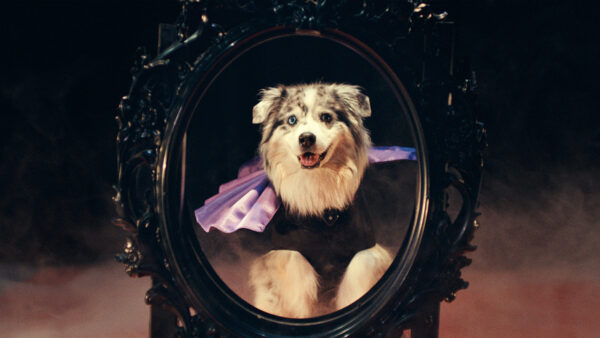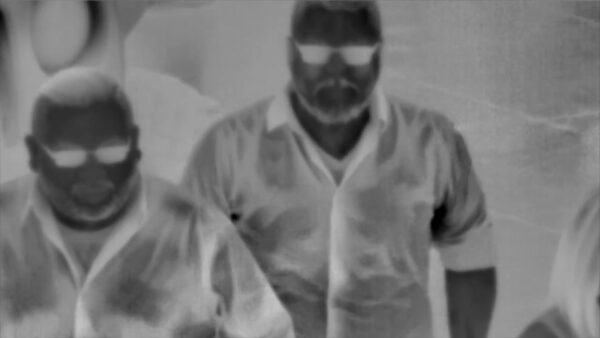Carved in Time
Nest
In a clever and playful moral, the extensive process of constructing a tree house charts the significance of time.

There seems to be a point in youth when one’s most genuine wish is for one’s own tree house: a private magical domain where altitude can welcome latitude, secrets, adventures, and a thrilling sense that anything is possible. Such fantasies are perhaps fuelled by the mystified image of treehouses in American popular culture and cinema, where they are rarely portrayed while being built; instead, they simply exist.
In Nest, Hlynur Pálmason charts the extensive process of constructing a tree house in a clever and playful moral on the significance of time and its ties with humans and nature. Shot on 35mm film, set against the mesmerising open landscapes of Iceland, Pálmason follows his three children for eighteen months (during different lockdowns in 2020-21) as they participate in the tree house building process in the family’s backyard. One fixed camera angle is maintained throughout the film so that all occurrences happen within the boundaries of a single frame. This rigid, formalistic, and creative decision gives rise to a minimalistic yet vibrant, compelling, and sometimes surprising story. Pálmason’s aesthetic choices allow us to acutely observe and appreciate the landscape’s extreme changes through different seasons, climates, and colours.
The beginning is quite cryptic: a mysterious long wooden (perhaps utility) pole can be seen in the middle of exquisite nature. A horse goes by, and some children walk and chat in the background. Then, the pole is cut in half, and some remaining blocks are used to bind the area. Gradually, a transformation begins: this wooden rod will eventually be used as the foundation for the tree house. But for the three children, the location becomes an exciting playground much before the house is in place; they play with different construction elements, use the ladder as a springboard, or watch the sunset together while sitting on the primary foundations. Those beautiful, inventive uses and the children’s intimate kinship evoke an envious sense of a romantic realm without intrusive modern-age technologies or distractions. The non-presence of adults contributes to an illusion of a world seemingly inhabited and ruled only by children, à la Lord of the Flies, just without any of the savage or violence.
Pálmason is never seen or heard; he is there only as an observer. At some point, one of his children calls him while he’s sewing inside the cabin, but we still can’t see his figure. This is particularly pertinent because of Pálmason’s dual role as director and parent. With this in mind, there is a (perhaps unconscious) notion that even when he can’t be seen, Pálmason’s presence as a documenter is also that of a caring adult looking after his children. But this is where things get slightly intricate, and the boundaries between fiction and documentary become murky. Around the film’s midpoint, one of the boys climbs over the top of the treehouse to try to retrieve his hat thrown by his brother earlier. Since the height and imbalance put the boy at imminent risk, we expect Pálmason to intervene, yet he doesn’t. We then wonder: Have the kids been left to themselves? Is the father-filmmaker present, or was the camera left alone? Alternatively, was this, perhaps, a carefully planned scene?
It’s an intriguing moment because the filmmaker himself casts doubt not only on his presence behind the camera but also on the naturalistic character of the film in general. This scene makes us question what might have been dramatised or scripted, and what “really” happened. Later, in an interview with Pálmason, we learn that he does not define the film as a documentary but as a fiction film where scenes are based on the children’s experiences and sometimes re-enacted. The child’s fall, for instance, was choreographed and supervised by a stuntman. Since these production efforts are practically seamless and the film demonstrates a modest approach to filmmaking overall, there is something slightly baffling in this contrast. But on the other hand, does it subtract anything from the quality of the result?
Either way, as the boy slips and falls from the roof, our immediate response is shock and distress. The following shots capture that mood: the tree house and the surrounding area have never seemed so neglected and sad. Will the house make it through harsh weather and storms? But seasons change, birds migrate back, and the land gets covered in snow to then be uncovered again mere frames later. Gradually, the kids return to play at the treehouse, and finally, the injured boy emerges with a cast and crutches. In a heart-warming closure, his siblings use a rope to lift him for his return to the tree house, at last. Here, the film’s reflections on change and rejuvenation are at their finest. Children can be wounded and then heal, similar to nature. With time and patience, struggles can be overcome, and life and nature prevail. Is there a more comforting and fitting realisation to conclude a pandemic?
Nest is not limited to an exploration of human dynamics within the children’s microcosmos, but more so becomes a study of their habitat and environment, which aligns with the decision to place the camera at a distance from the characters. Though we might have suffered from a lack of close-ups and facial expressions, rendering the children more like LEGO minifigures than dramatic protagonists, we benefited from a panoramic view of a marvelous transforming scenery. People and nature are equally important in Nest, and both are handled with care and tenderness.
In his brief return to the short film format, Hlynur Pálmason, with already three acclaimed feature films (Winter Brothers, A White, White Day, and Godland) under his belt, diffuses his cinematic language and cleverly narrows it down. There’s great joy in witnessing that as an audience. Interestingly, though the substantial parts of the wooden structure of the tree house have been placed with a crane, the passing of time and implications of the process are felt nonetheless, highlighting the boundless ability of cinema to reflect transformation. In that sense, the tree house has been carved by and in time. Before we even realise, all this magic happened without us getting a glimpse inside the kingdom.




There are no comments yet, be the first!